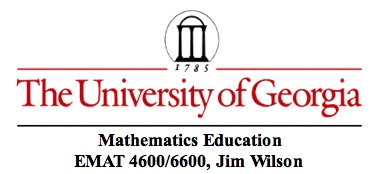
Area of Golfing Greens

Problem:
You are a greenskeeper at a golf course. In order to know how much fertilizer to apply to the grrens, you need an estimate of their areas. How would you estimate the area of a golf green? (Keep practical considerations in mind. Your procedure should be feasible under actual conditions on a golf green and as simple as possible.)
Comments:
To simplify the problem, assume that the green is flat.
The usual elementary school approach of imposing a grid over a model and counting the squares does not translate out into the field very well. You need a process that lets you go onto the golf green, make measurements, and estimate the area.Suggestions from professional greenskeepers:
Pick a point in the middle of the Golf Green and make measurements regularly from that point to the edge of the green. The sketch above depicts 16 evenly spaced measures around the point.
Two ways of estimating the area from these measures are the average circle and the average sector using the formulas as shown at the right.
This illustration (i.e., the formulas) uses 16 measures.
Would it matter how near the "center" of the green the central point was taken? How?
How much precision is lost with using fewer measures (say 8 or 4)? How much precision is gained by increasing the number? in which formula?
Program a calculator or spreadsheet to estimate the areas from N measurements. Can you obtain real data from a golf green? simulated data from a model in the classroom? Extensions/Variations:
(a) Compare this problem with Flowing Stream.
(b) How would you estimate the surface area of a lake?(c) See Area of Texas.
Reference:Martin, W. G., & Ponte, J. (1985). Measuring the Area of Golf Greens and Other Irregular Regions. Mathematics Teacher, 78(5), 385-89.
This article by Gary Martin and Joao Ponte was published in the Mathematics Teacher and was written when they were doctoral students at the University of Georgia. Dr. Ponte is a mathematics educator in Portugal and Dr. Martin is a mathematics educator at Auburn University.
The article deals with some issues of precision of the estimations for different shapes. The estimates are pretty good. They are not exact, however, for regular shapes such as rectangles.